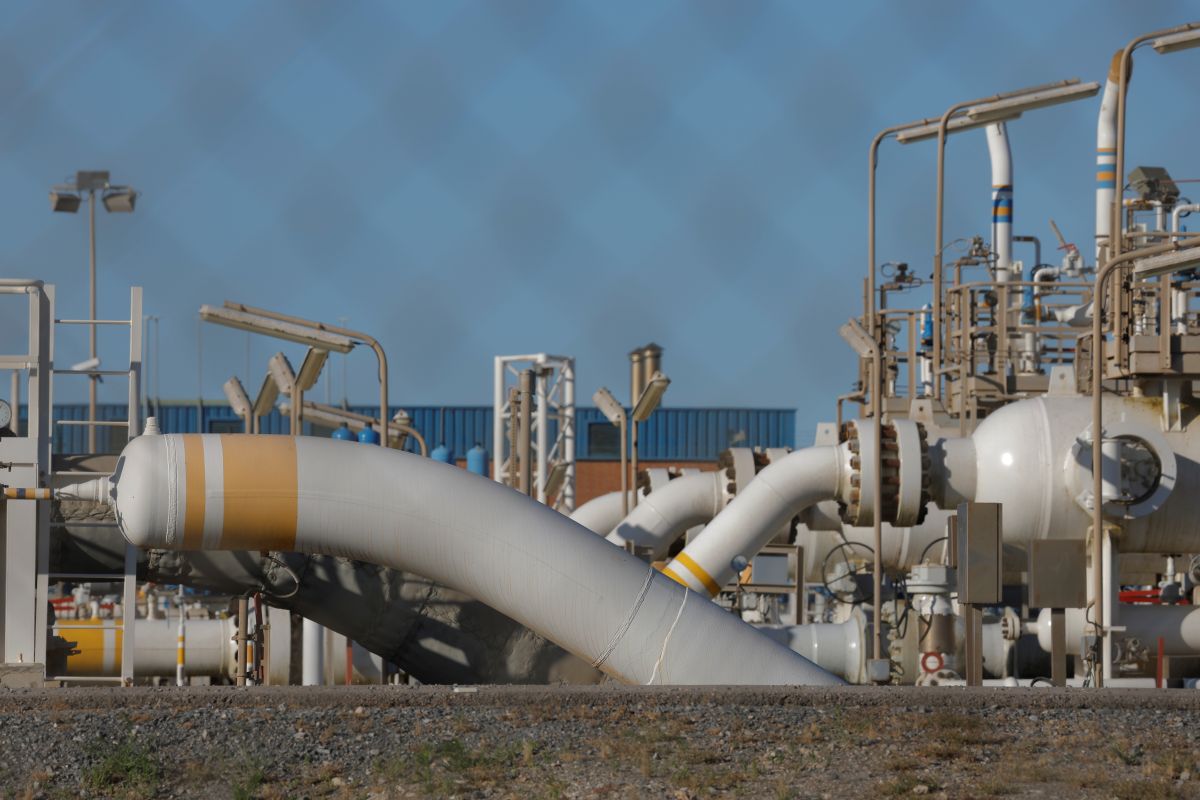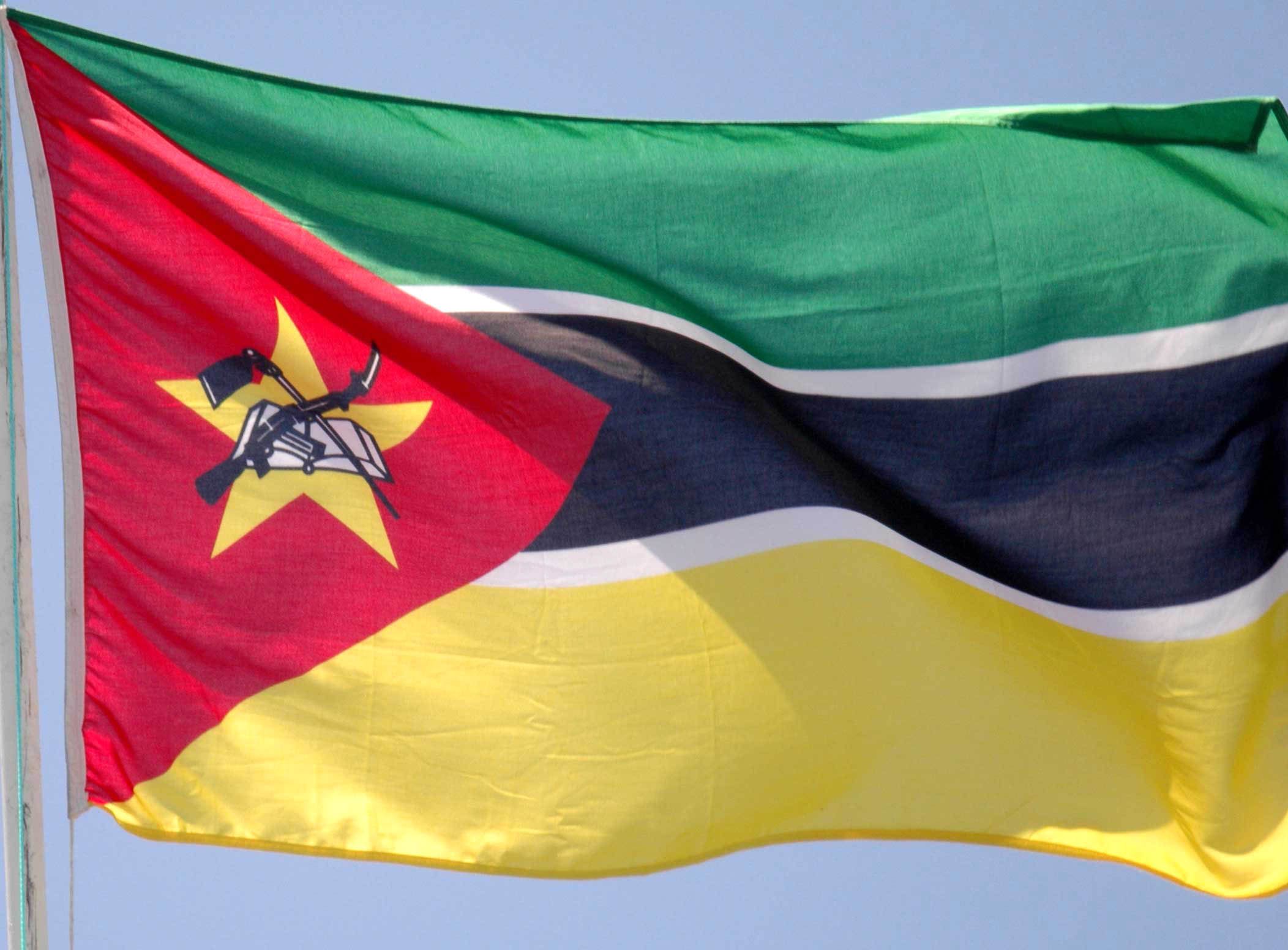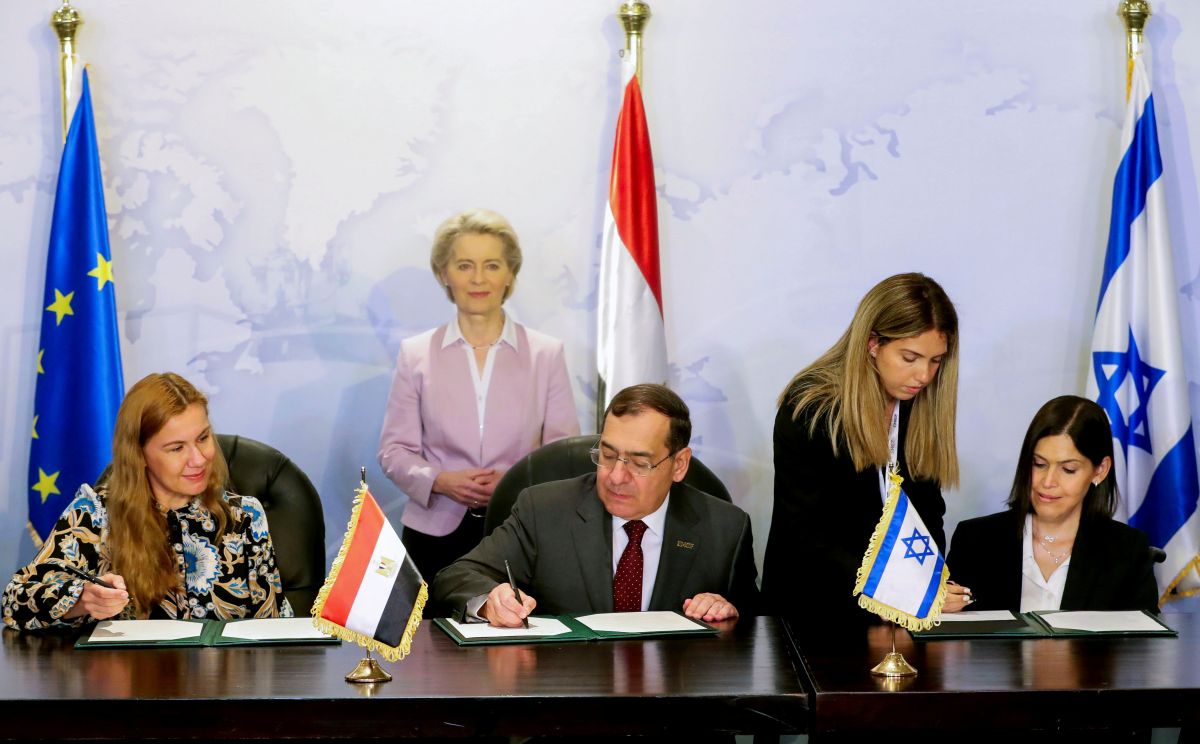Sub-Saharan Africa May Be a New Source of Gas for the EU
In order to become independent from supplies of energy resources from Russia, EU countries are intensively looking for alternative gas import opportunities, including from Sub-Saharan Africa. This direction may become an important element of European diversification, but its development requires external investments and improvement and expansion of the existing infrastructure. European companies and the EU itself can play a key role in this regard.
 JON NAZCA/Reuters/Forum
JON NAZCA/Reuters/Forum
Until recently, the development of the gas sector in Africa was constrained by climate protection and the policy of phasing out hydrocarbons. However, while the EU and its members promoted decarbonisation and the development of solar and wind energy, the world’s leading mining companies, including European ones, continued to explore and invest in newly discovered deposits. However, western banks increasingly gave up lending to and securing gas investments. African leaders considered this approach unfair. They pointed out that since the continent has contributed the least to global warming and bears its greatest costs (the effects of climate change are most felt there), it should be able to use the available resource potential without any obstacles. From their perspective, the possible profits were to help stimulate development and increase access to electricity, which 600 million Africans (about 50% of the population) lack, while its share of global CO2 emissions would only increase from 3% to 4%. The Russian invasion of Ukraine and the resulting need for the EU to become energy independent from Russia have made this dilemma give way to the urgent need to secure the widest possible range of new energy sources. This will be facilitated by the recent reclassification of gas investments by the EU to “green”. If the trend continues, its production in Africa has a chance to increase from the current level of 260 billion m3 (bcm; including 60% from Algeria and Egypt) to 470 bcm in about 15 years. This is 75% of the volume of current Russian production. Both existing and new producers, especially from Sub-Saharan Africa, see the current economic situation as an opportunity for profits.
Existing Gas Sources from Africa to Europe
Currently, the EU satisfies about 14% of its gas demand through imports from Africa, mainly thanks to the gas pipeline connections between Algeria and Italy (Trans-Mediterranean) and Spain (Medgaz), and in the form of LNG. Between 2020 and 2021, Algeria’s exports to the EU in total increased from 38.2 bcm to 55 bcm and are expected to grow further this year (including by 2 bcm through pipelines). The country is set to replace Russia as the largest supplier for Italy.
At the same time, both the share and the importance of gas sources from Sub-Saharan Africa, especially in the area of LNG, will increase. Its largest producer and exporter south of the Sahara is Nigeria (28 bcm of gas equivalent produced in 2020; today, a source of 55% of gas in Portugal), and it has not reached its full production potential. Angola, Equatorial Guinea, and Cameroon produce smaller amounts—7 bcm, 2 bcm, and 2 bcm in 2020, respectively. In October this year, a tanker arrived in Mozambique for the first LNG transport from the deep-sea field Coral Sul (FLNG), operated by Eni and sold by BP.
Potential Sub-Saharan African Suppliers. The most promising is the prospect of BP launching exports from deposits off the coast of Senegal and Mauritania. It completed 80% of the infrastructure for exploitation of the Greater Tortue Ahmeyim (GTA) field estimated at 200-425 bcm from which exports are to start next year. The sale of the gas expected in the first phase of operation (until the end of 2023) has already been contracted. There is growing interest in using gas from this field, especially in the second phase (until 2027). Senegal, which co-owns the field together with Mauritania, received visits by German Chancellor Olaf Scholz in May this year and by Polish President Andrzej Duda in September. The German leader declared a contribution to increasing the production capacity of the GTA. Also in 2023, production is expected to start from smaller gas fields in the Republic of Congo and Angola (Eni, 43 bcm, Chevron, 17.5 bcm, respectively). The then Italian Prime Minister Mario Draghi visited these countries in April this year and concluded contracts to increase imports as a supplement to supplies from Algerian sources.
The largest reserve of gas that could reach Europe from Sub-Saharan Africa is likely in Mozambique (around 1,200 bcm according to research firm Rystad Energy’s conservative estimates). Following its discovery a decade ago, the country had hoped to become the world’s third-largest exporter of LNG after Qatar and Australia. The Mauritanian authorities stated they have a reservoir of a similar size (although probably an inflated assessment) in the most promising subsea field of Bir Allah; in October this year, BP signed a contract for exploration and production of this field, with an expected perspective of more than a decade. Similarly, in the long term, Tanzania may also join large exporters. After years of reluctance towards extraction companies, it signed in June this year a contract with Shell and Norwegian Equinor for the construction of a $30 billion offshore LNG terminal for its deposits in the Indian Ocean.
Security and Infrastructure Challenges
Investments by TotalEnergies and other partners in Mozambique’s Afungi Peninsula to process the country’s largest Rovuma deposits have been put on hold for security reasons. The ongoing war between Mozambique and regional forces and jihadists declaring loyalty to ISIS makes their completion unlikely.
While in Sub-Saharan Africa it is LNG projects that are mainly developed, a pipeline connection from Nigeria would scale up exports to the EU. Its land variant (the Trans-Saharan Gas Pipeline) might lead through Niger, which also could export from its deposits (30 bcm) to Hassi R'Mel in Algeria. From there, the gas would be transported further via submarine pipelines or in the form of LNG. This would allow Nigeria to export an additional 30 bcm a year to Europe, volumes comparable to those from Algeria. While the project remained in the planning sphere for 40 years, the new international context has brought them back to life. Three countries signed a relevant memorandum in July this year, and according to the Nigerian authorities, EU representatives are probing the possibility of co-financing the $13 billion investment. However, the prospect of building and maintaining the pipeline is being dismissed by the threat posed by jihadists operating in the Sahel. An alternative is a submarine pipeline between Nigeria and Morocco (currently only reaching Ghana), which would pass through 13 countries’ territorial waters. Nigerian gas, as well as newly discovered gas reservoirs in Ghana, Côte d'Ivoire, and Senegal, would flow along the Atlantic coast, supplying each of the coastal and neighbouring states. In September this year, Nigeria, Morocco, and the West African bloc ECOWAS signed a memorandum on the pipeline’s construction, and a final investment decision is expected in 2023. However, the scale of the project may be even greater than one with a land connection, and the main goal of the investment (energy for ECOWAS countries) limits its potential for the EU.
Another problem with development of gas infrastructure is the theft of oil from pipelines through illegal connections (even submarine), common in Nigeria. For these reasons, the largest Nigerian LNG company operates at 68% of its capacity. The authorities are now hiring former rebels from the Niger Delta who had been attacking this infrastructure since 2006, to protect it. It is hoped that this will increase the security and scale of production, but it is a risky, ad hoc strategy that does not guarantee lasting results.
Perspectives
The Russian invasion of Ukraine has increased the likelihood of the implementation of gas projects in Senegal, Mauritania, Angola, Nigeria, Tanzania, and other Sub-Saharan African countries. Over the next year, the share of African gas in the EU’s energy mix will increase, which will make partnerships on the continent more important. After the visits by the leaders of Italy, Germany, and Poland to African gas-producing countries, more progress in this area can be expected. Individual countries, for example Italy, sparingly inform about such arrangements, securing their own interests first. The EU will seriously consider the risks and opportunities in identifying the Trans-Saharan Gas Pipeline project as strategic. An argument supporting this is the possibility of removing Gazprom from the investment. The attitude of Qatar also will be a challenge as it has signalled its intent to condition the admission of European companies to QatarEnergies projects by first obtaining shares in their investments in Africa and South America.
The pressure under which the EU acts means that African countries will be able to set more favourable terms of sale for themselves. It is, however, doubtful that their citizens will feel the expected benefits. Some countries, looking for quick profits from exports, will be willing to reduce their own consumption, which will cause social tensions, for example, it will slow down electrification. The election prospects, especially in Senegal, Nigeria, and DR Congo, increase the risk that profits from new gas and oil contracts will be spent by the authorities of these countries on election campaigns rather than on development. This could spark accusations that the EU is creating an environment conducive to corruption by local leaders.





